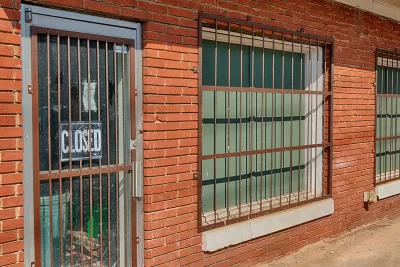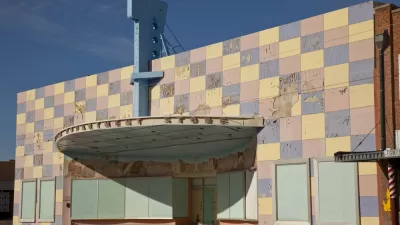Research suggests that more and more parking won't solve the woes of struggling commercial corridors, even if it's difficult for business owners located on those corridors to believe.

Colin Stewart shares analysis of the relationship between parking and commercial activity—inspired by the ongoing debate about how to mitigate high commercial vacancies in Montreal, Quebec.
The Chamber of Commerce of Metropolitan Montreal has proposed more parking, based on feedback from 261 business owners in the city.
"This intuitively makes sense," writes Stewart, "we’ve all had to buy heavy or cumbersome items that are impractical to lug home without a car. Seen in this light, businesses practically can’t function without a vehicle, and a vehicle practically can’t function without a place to park it. More parking, therefore, should mean more business."
More parking for more business is a common argument in almost every city, even in cities located in the country directly to the south of Canada. "However, looking into the data a bit further revealed a different truth," writes Stewart.
The analysis by Stewart's team at Local Logic, a Montreal-based urban planning data consultant, finds that streets with the lowest amount of available parking in the city have the lowest vacancy rates, and vice versa. "These findings may seem counter-intuitive. But there are a number of reasons why parking may not help retail business, and can even be harmful," according to Stewart.
To help build the case, Stewart cites data that show parking to be an inessential component of retail streets—with examples from Philadelphia, New York City, and the United Kingdom.
FULL STORY: Does more parking bring more business?

Alabama: Trump Terminates Settlements for Black Communities Harmed By Raw Sewage
Trump deemed the landmark civil rights agreement “illegal DEI and environmental justice policy.”

Planetizen Federal Action Tracker
A weekly monitor of how Trump’s orders and actions are impacting planners and planning in America.

Why Should We Subsidize Public Transportation?
Many public transit agencies face financial stress due to rising costs, declining fare revenue, and declining subsidies. Transit advocates must provide a strong business case for increasing public transit funding.

Understanding Road Diets
An explainer from Momentum highlights the advantages of reducing vehicle lanes in favor of more bike, transit, and pedestrian infrastructure.

New California Law Regulates Warehouse Pollution
A new law tightens building and emissions regulations for large distribution warehouses to mitigate air pollution and traffic in surrounding communities.

Phoenix Announces Opening Date for Light Rail Extension
The South Central extension will connect South Phoenix to downtown and other major hubs starting on June 7.
Urban Design for Planners 1: Software Tools
This six-course series explores essential urban design concepts using open source software and equips planners with the tools they need to participate fully in the urban design process.
Planning for Universal Design
Learn the tools for implementing Universal Design in planning regulations.
Caltrans
Smith Gee Studio
Institute for Housing and Urban Development Studies (IHS)
City of Grandview
Harvard GSD Executive Education
Toledo-Lucas County Plan Commissions
Salt Lake City
NYU Wagner Graduate School of Public Service





























